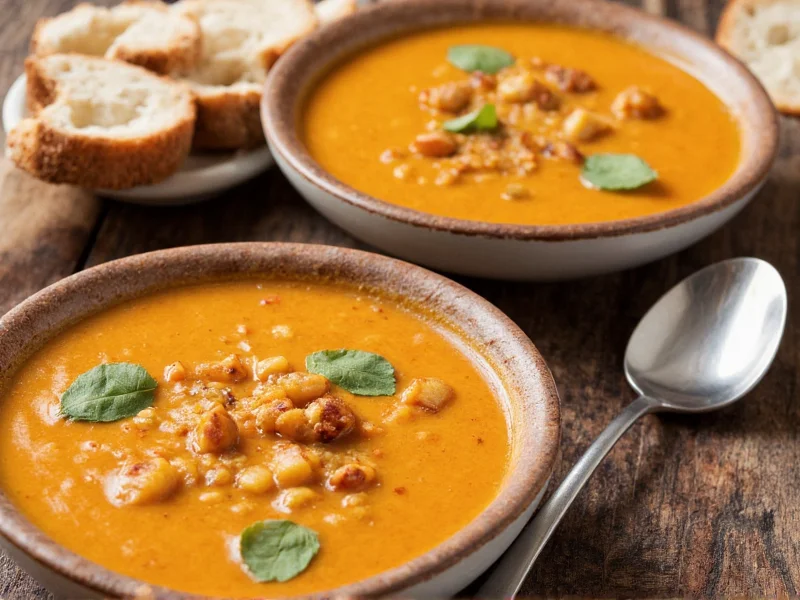When exploring the relationship between soups and scoops, it's essential to recognize how these elements work together in culinary practice. While seemingly simple, the proper pairing of soup types with appropriate scooping tools significantly impacts portion control, presentation, and overall dining satisfaction. This guide examines the practical applications, historical context, and professional techniques that connect these two culinary staples.
The Culinary Connection Between Soups and Scoops
Soups represent one of humanity's oldest prepared foods, with evidence of soup-making dating back to 6000 BC. Scoops, particularly in the form of ladles, evolved alongside soup preparation as essential serving tools. The modern culinary professional understands that different soup varieties require specific scoop sizes and designs to maintain ideal serving temperatures and portion consistency.
Types of Soup Scoops and Their Applications
Professional kitchens utilize various scoop designs tailored to specific soup types. Understanding these distinctions helps maintain proper soup serving techniques while minimizing waste:
| Scoop Type | Capacity | Best For | Temperature Consideration |
|---|---|---|---|
| Standard Ladle | 4-8 oz | Cream soups, chowders | Maintains heat for 8-10 minutes |
| Perforated Ladle | 6-10 oz | Bouillons, consommés | Prevents ingredient transfer |
| Serving Spoon | 2-4 oz | Appetizer portions, tasting menus | Quick cooling for delicate flavors |
| Ice Cream Scoop | 2-6 oz | Cold soup portions (gazpacho) | Maintains cold temperature |
Professional Soup Portioning Standards
Restaurant operators follow precise portion control guidelines to maintain profitability and consistency. The industry standard for main course soups ranges from 8-12 ounces, while appetizer portions typically measure 4-6 ounces. Using properly calibrated soup scoops ensures these standards remain consistent across service periods.
Many establishments implement the "scoop and weigh" method during staff training: new employees measure portions using both visual scoop estimation and digital scales until they achieve consistent results. This practice significantly reduces food costs while maintaining customer satisfaction with portion sizes.
Temperature Management Techniques
Proper soup temperature directly affects how scoops perform. Hot soups (165°F/74°C) maintain viscosity better in standard ladles, while chilled soups require specialized scoops with thermal handles. Restaurants serving both hot and cold soup varieties often maintain separate scoop stations to prevent temperature cross-contamination.
Food safety regulations require that hot soups remain above 140°F (60°C) until served. Using appropriately sized scoops minimizes the time soup spends outside temperature-controlled environments. For example, a 6-ounce ladle removes less heat from a soup tureen than repeatedly dipping a larger 12-ounce scoop.
Creative Culinary Applications
Chefs increasingly use unconventional scoop techniques to enhance presentation. Some notable approaches include:
- Soup shooters: Using small espresso cups with 2-ounce portions for tasting menus
- Layered presentations: Alternating soup and complementary elements using different scoop sizes
- Cold soup quenelles: Shaping chilled soups with specialized scoop techniques
- Soup foam portions: Using specialized spoons for aerated soup presentations
These techniques demonstrate how understanding proper scoop selection contributes to innovative menu development while maintaining portion control standards.
Common Misconceptions About Soup Scoops
Many home cooks operate under misconceptions about soup scoops that affect their dining experiences. Contrary to popular belief, larger scoops don't necessarily mean better value—they often lead to wasted food when portions exceed what guests can comfortably consume. Similarly, using ice cream scoops for hot soups creates safety hazards as the metal handles become dangerously hot.
Professional kitchens follow the “one scoop per soup type” principle to prevent flavor contamination. Mixing scoops between different soup varieties, even when cleaned, can transfer subtle flavors that compromise delicate broths.
Practical Tips for Home Cooks
Home chefs can implement professional soup serving techniques with minimal equipment:
- Designate specific measuring cups as dedicated soup scoops
- Chill scoops before serving cold soups to maintain temperature
- Wipe scoop rims clean before each serving for professional presentation
- Store scoops with soup pots to ensure immediate availability
- Use visual markers on serving containers to indicate proper fill levels
These simple practices significantly improve the consistency and quality of home-prepared soups while reducing food waste.
Historical Evolution of Soup Serving Tools
The history of soup scoops reveals fascinating culinary evolution. Early civilizations used hollowed gourds and animal horns as primitive ladles. By the Middle Ages, metalworking advancements produced the first specialized soup ladles with long handles to protect servers from steam.
Industrial standardization in the 19th century introduced calibrated scoop sizes, while the 20th century brought ergonomic designs focused on reducing server fatigue. Today's professional scoops incorporate materials science innovations that maintain temperature stability while providing comfortable grip surfaces.











 浙公网安备
33010002000092号
浙公网安备
33010002000092号 浙B2-20120091-4
浙B2-20120091-4